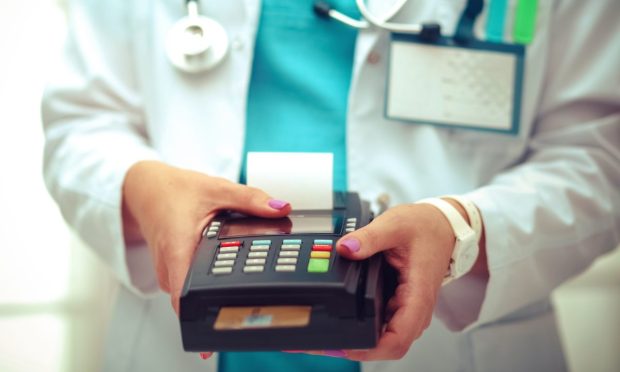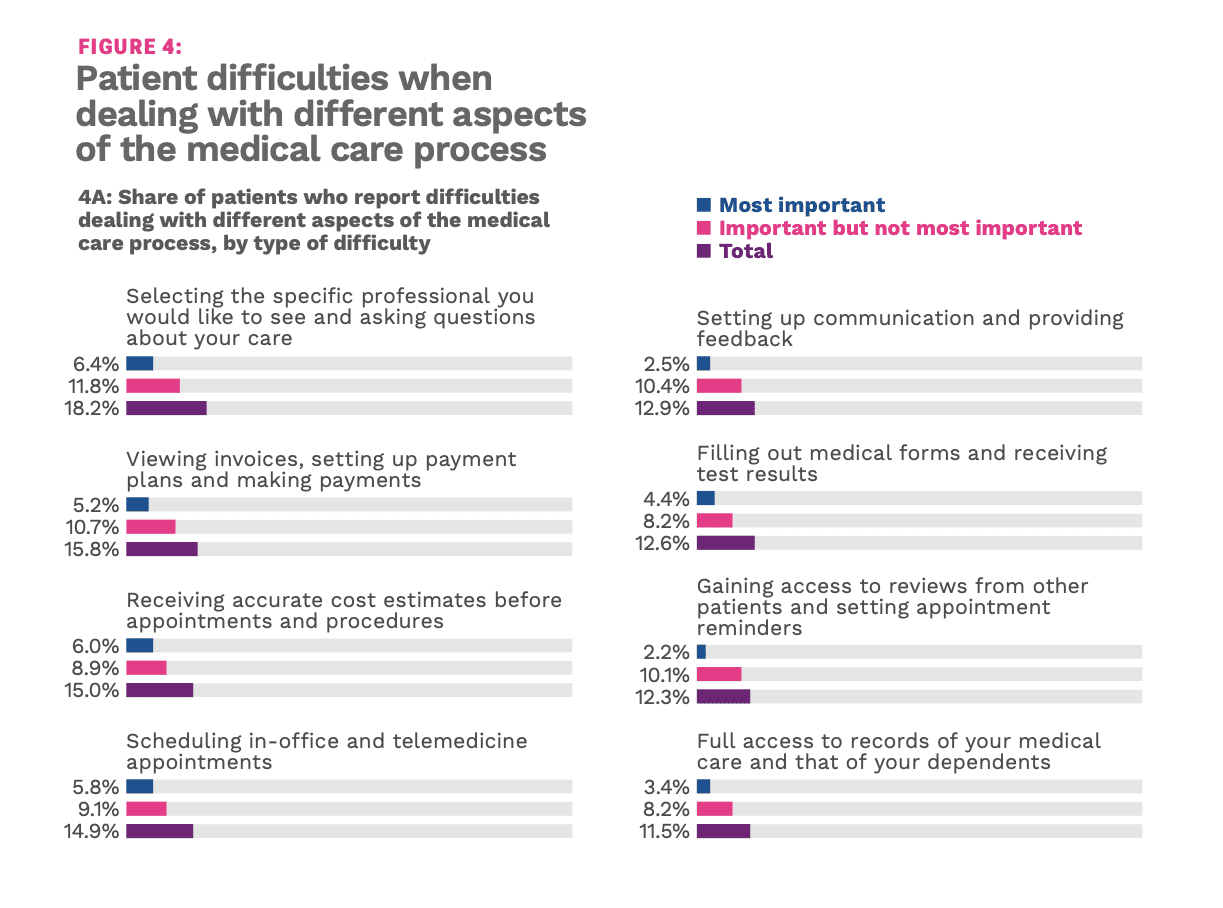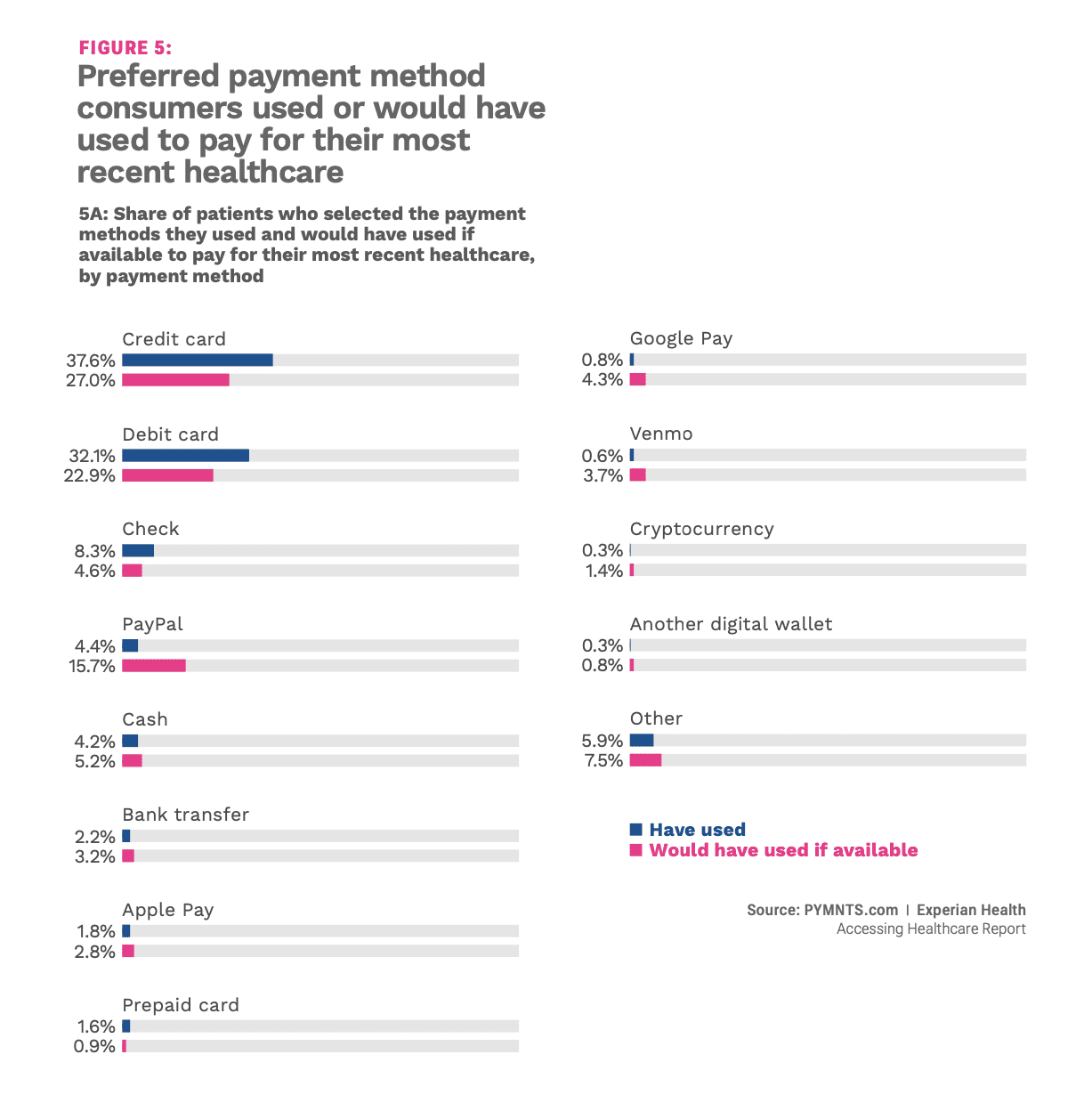28% of Patients Would Like to Use Digital or Mobile Wallets to Pay for Healthcare

Two of the most common points of friction that patients experience when trying to access medical care pertain to costs or payments.
Those concerns are ranked second and third behind only the most common point of friction: selecting the specific professional the patient would like to see and asking questions about their care.
Eighteen percent of the patients surveyed said that was an important difficulty, according to “Accessing Healthcare,” a PYMNTS and Experian Health collaboration based on a survey of 2,333 consumers.
Get the report: Accessing Healthcare
The second most common friction that patients report encountering when dealing with different aspects of the medical care process is viewing invoices, setting up payment plans and making payments. Sixteen percent of patients said that was an important pain point.
The third most common pain point is receiving accurate cost estimates before appointments and procedures. Fifteen percent of patients said this was an important difficulty.

Patients want to pay for their medical care with a variety of payment methods. The greatest shares of consumers want to use cards — 27% say they would have used a credit card if available to pay for their most recent healthcare, and 23% said the same of a debit card.
Patients also say they would use more digital or mobile wallets to pay their providers if these options were available. PYMNTS’ data shows that 28% of patients would have used these payment methods if they were available, with 16% citing PayPal, 4% citing Google Pay, 4% citing Venmo, 3% citing Apple Pay and 1% citing another digital wallet.
How they do pay is quite different. The top three payment methods consumers used to pay for their most recent healthcare are cards and checks. Thirty-eight percent used a credit card, 32% used a debit card and 8% used a check.
Just 8% have used digital or mobile wallets to pay their providers, with 4% using PayPal, 2% using Apple Pay, 1% using Google Pay and 1% using Venmo.
